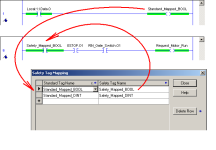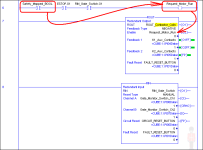Hello. I am looking for some strategy ideas in developing a program in a CompactLogix system using the L43S processor. This is an upgrade from a previous SLC processor where SIL3 safety is desired.
I cannot seem to get my hands around the issue of the standard program not being able to read/write to the safety program. I understand why, but if my motor controls are located within the safety routine how do I exercise any control over those same outputs using my standard routine? Should I place everything within the safety task?
Thanks.
I cannot seem to get my hands around the issue of the standard program not being able to read/write to the safety program. I understand why, but if my motor controls are located within the safety routine how do I exercise any control over those same outputs using my standard routine? Should I place everything within the safety task?
Thanks.




